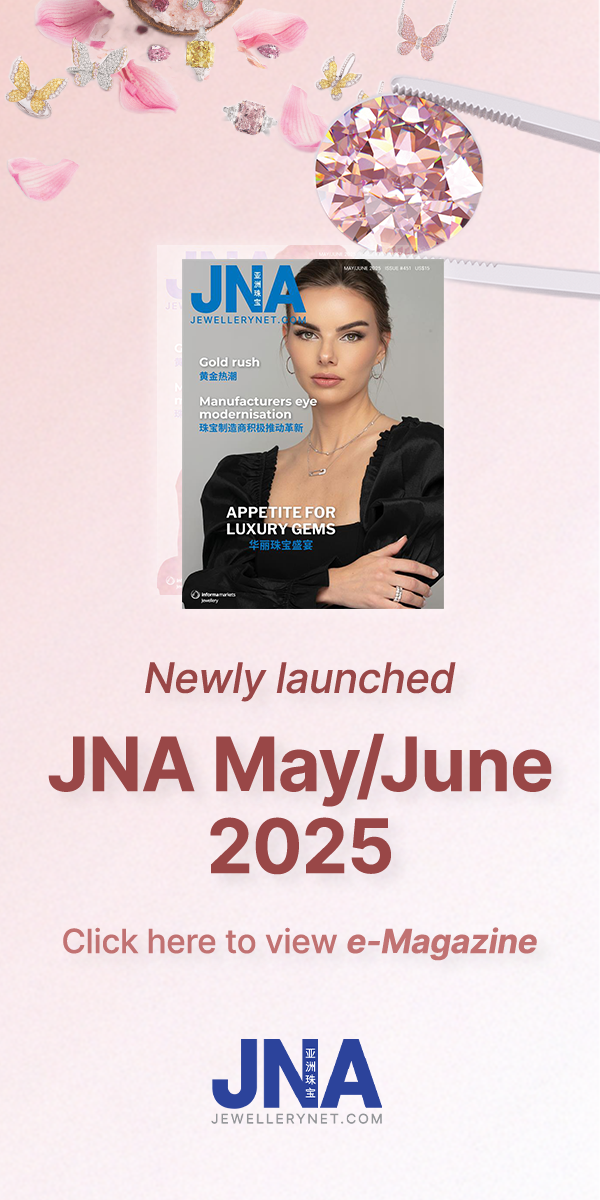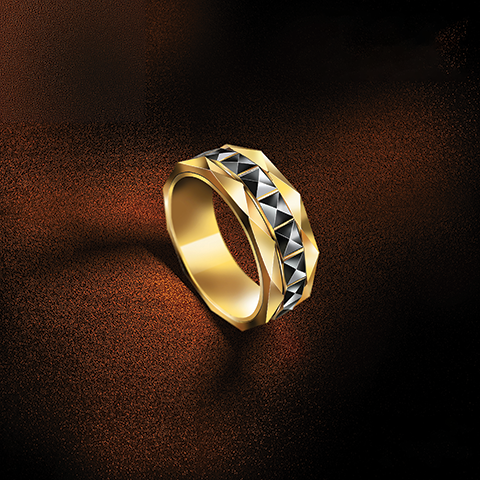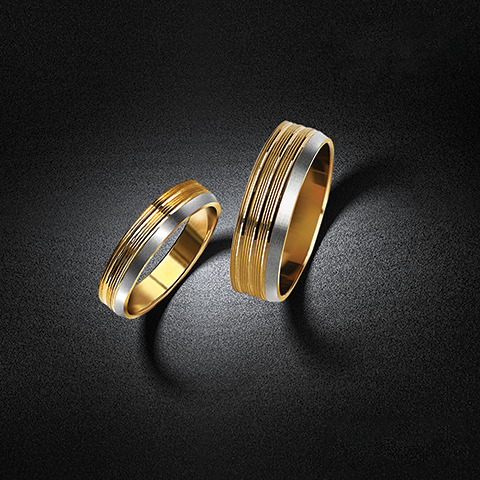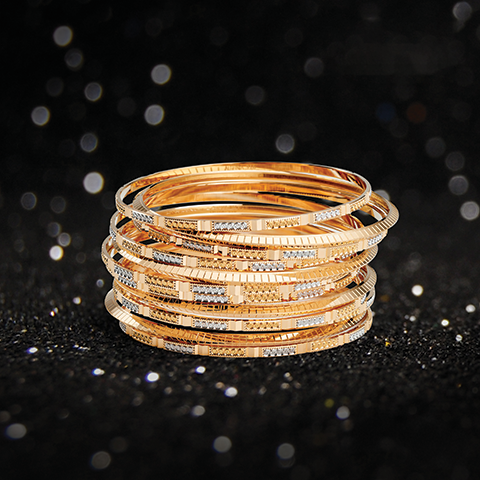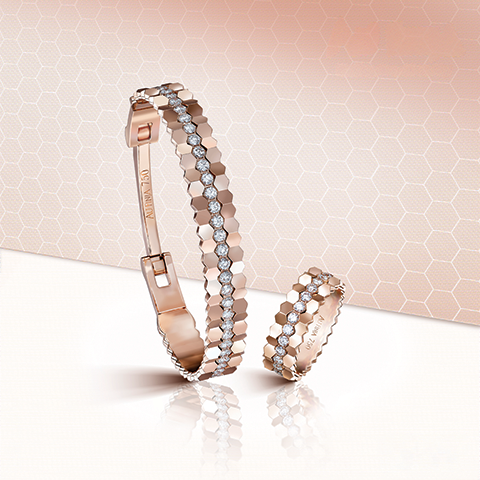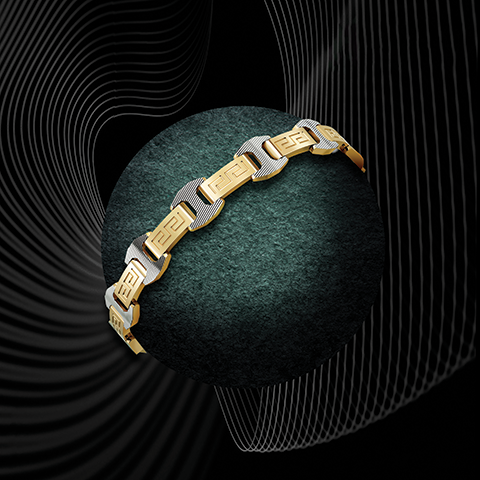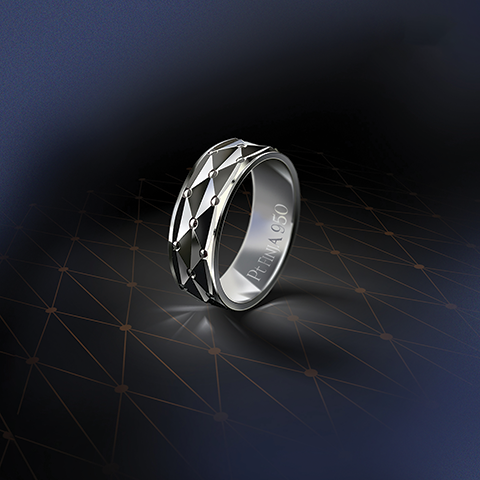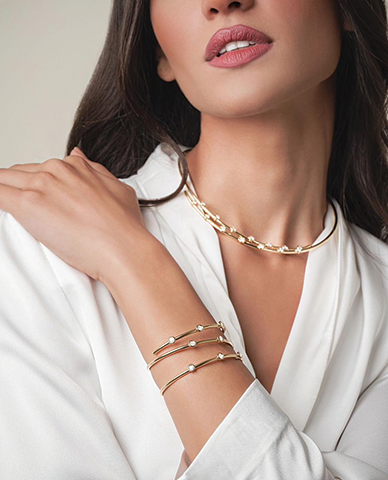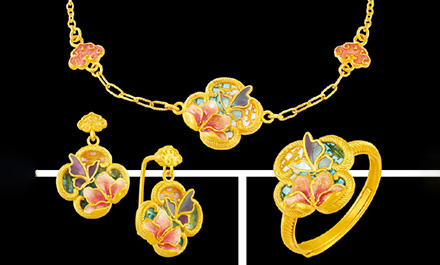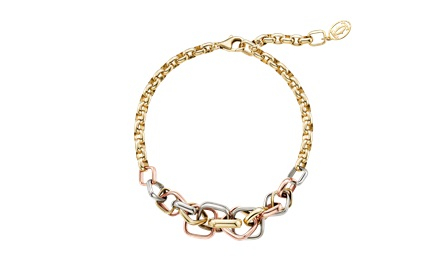The future is glowing for Middle East-based jewellers whose manufacturing prowess, unparalleled creativity and innovative spirit are ushering in a fresh era of growth and stability.
This article first appeared in the JNA November/December 2024 issue.
The Middle East is a land of opulence and golden opportunities, and its jewellery manufacturing sector is no exception. Known the world over for their exceptional designs and high-quality finish, Middle Eastern jewellers are counting on global expansion and modernisation to bolster growth.
Further shining the spotlight on the Middle East’s thriving jewellery sector is the highly anticipated Jewellery, Gem & Technology in Dubai (JGTD) 2024 scheduled for November 12 to 14 at Halls 1 and 2 South of the Dubai Exhibition Centre.
Jointly organised by Informa Markets Jewellery and the Italian Exhibition Group, the show’s third edition features over 350 exhibitors from more than 25 countries and regions. Making their debut this year are two theme zones: The Dubai City of Gold Pavilion and Dubai Jewel Narratives.
JNA sat down with Ajay Sobhraj, founder and chairman of Dubai-based Au Finja and Joe Hakim, manager of Lebanon’s Antoine Hakim, who talked about bright spots and challenges in the Middle Eastern jewellery manufacturing scene.
Au Finja: Craftsmanship and innovation
Established in Dubai in 1997 with just two employees and a refurbished, second-hand machine, Au Finja’s story is that of perseverance and success.
“I often say, ‘Well-planned is half done,’ a principle that has guided our early days in the business,” shared Sobhraj. “What began as a modest venture led to a breakthrough in jewellery making as we pioneered the use of CNC machining for bangle production.”
Fast-forward to 2024, Au Finja has become one of the Middle East's largest and most inventive jewellery manufacturers. It employs more than 500 skilled artisans and professionals across four manufacturing facilities in the United Arab Emirates, India, Oman and Germany.
Specialising in CNC machine-made bangles and bracelets, rings, cuffs and kadas (traditional thick bracelets usually worn on the hands or wrists in India) in 14-, 18-, 21- and 22-karat gold or platinum, and adorned with diamonds, the company has built a solid customer base in the Middle East, North America, Europe, Africa and the Asia-Pacific region. In 2020, it extended its footprint to the US, Australia and the UK.
Among its signature collections are the Kavach Kadas, YuMe Link Bracelet and YuMe 360 Rings. The iconic YuMe Collection, launched in 2018, exemplifies Au Finja’s design philosophy of blending timeless craftsmanship with contemporary aesthetics.
Sobhraj remarked, “Its success resonated strongly with our retail partners and laid the groundwork for future expansions, including plans for larger, more advanced manufacturing facilities.”
Over the years, Au Finja continued to grow from strength to strength. In 2022, it became a prominent supplier to a leading global jewellery brand while its Mumbai facility celebrated its 25th anniversary.
Earlier this year, the company opened its 27,000-square-foot state-of-the-art factory in Oman, which can process over five tons of gold annually, enabling Au Finja to diversify its product range to include machine-made chains and casting products.
Amid such achievements, the jeweller also faces challenges such as volatility in gold, platinum and diamond prices. “This is a persistent concern and a challenge to pricing and sourcing. However, our integrated operations allow us to manage and mitigate some of these fluctuations,” shared Sobhraj.
Meanwhile, auspicious occasions such as festivities and weddings continue to fuel demand for gold jewellery. Au Finja is likewise seeing growing preference for exclusive designs as customers seek pieces with a compelling story.
“The year 2025 holds promising opportunities for Au Finja in sustainability, technology and global expansion. We are well-prepared to navigate challenges with the same resilience and visionary mindset that have defined our journey thus far,” remarked Sobhraj.
This is also where the advantages of being in the Middle East come to play. According to Sobhraj, Dubai’s status as a global trading hub allows Au Finja to seamlessly connect with major markets across the Middle East, Europe, Asia and Africa.
Being a member of Dubai Exports, the export promotion agency of the Department of Economic Development, similarly enhanced Au Finja’s export capabilities through access to market intelligence and networking opportunities, which were instrumental in the company’s expansion to India, Oman and Germany, explained Sobhraj.
Sobhraj is likewise an active board member of the Dubai Jewellery Group (DJG), which is tasked to promote Dubai as a global hub and provide its members with value-added services. He noted, “As an active member of DJG since 2015, I have played a key role in driving the growth of Dubai's jewellery sector and positioning it as a global leader. A significant part of my contribution was elevating Dubai’s and the Dubai Pavilion’s brand visibility at international trade events, showcasing the city on the global stage.”
Antoine Hakim: Legacy and global expansion
Also on a consistent growth trajectory is Lebanon-based fine jeweller Antoine Hakim. Banking on a decades-old jewellery-making heritage, the company is forging new paths of growth through market expansion and continuous innovation, noted company manager Joe Hakim.
Antoine Hakim traces its roots to Joe’s grandfather who founded it in 1940. Its major markets are in the Middle East, specifically Qatar, Kuwait and Bahrain. Among its business objectives is to strengthen its global presence by participating in international shows in Hong Kong.
“We first joined the Hong Kong show in 2019 as we were looking for new markets,” explained Joe. “We saw very encouraging response to our products at the recently concluded September Hong Kong Fair. Our target now is to get more exposure in Hong Kong, China, the Philippines and Taiwan where we found new customers.”
Based on market observations, Asian buyers gravitate more towards smaller items with high-end designs as opposed to Middle Easterners who are partial to big, statement pieces with more stones, he said.
Joe sees value in building strong international networks, which became critical to supporting Antoine Hakim’s business during the Covid-19 crisis. At the time, the company worked with overseas partners to help fulfil orders from Europe as well as in some areas in the Middle East.
“I consider solid partnerships a competitive advantage,” noted Joe. “We have been in the industry for 85 years and over the decades, we have gained the trust and respect of our clients. This is very important in the jewellery business.”
Antoine Hakim’s jewellery collections are continuously gaining further steam in the market, with potential buyers – impressed by the company’s exceptional artistry – regularly expressing their intention to work with the Lebanese jeweller amid market difficulties.
The company official also regards low labour costs, refined artistry and top-quality designs as major advantages of Middle East-based jewellery manufacturers.
Moving forward, Antoine Hakim will continue to pursue its expansion strategies, with a strong focus on the US market. “This is our goal in 2025. The timing is right because the US economy is stabilising. Our designs, which stand out from what is in the market now, will likely resonate with US buyers. We also received positive feedback from US buyers at the Hong Kong show,” noted Joe.
The company will focus more on yellow gold in 2025, based on robust demand for yellow gold jewellery in the past year. According to Joe, jewellers will likely produce yellow-gold versions of popular jewellery designs that are currently available in pink and white gold.
Antoine Hakim is also conceptualising new design ideas centred on the yellow gold trend, which will further be explored and presented in Hong Kong shows next year, revealed Joe.


